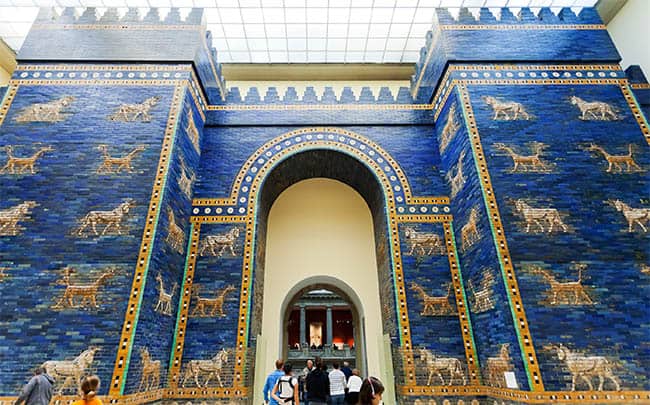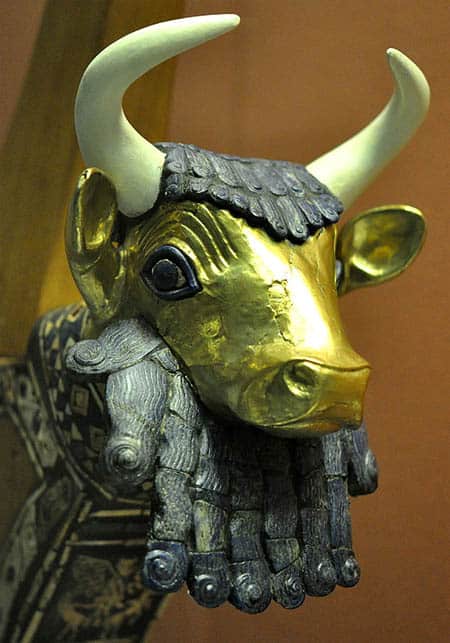1. The Ishtar Gate:

The Ishtar Gate, reconstructed and displayed in the Pergamon Museum in Berlin since 1930, was created during the time of the longest-reigning Babylonian monarch, Nebuchadnezzar II (634 BC–532 BC). Found on the north side of the ruins of Babylon in disrepair, the gate was reconstructed using original bricks and repainted. Today, the Ishtar Gate is considered by many to be the finest example of Mesopotamian art.
The gate itself is large: it is 14 feet high and 100 feet wide. Its crenellated towers show an architectural mastery, and its gold and yellow mosaics indicated that one was passing through into a rich and powerful city. From remnants of dyes and paints, restorers believe that the Ishtar Gate was colored, or topped, with lapis lazuli. The lapis-colored paint was expensive and indicates the importance of the structure.
It is believed that the Ishtar Gate was simply the last structure on a long road leading into the north side of the city. Historians and archaeologists believe that the road leading to the gate was lined with miniature castle towers, all crenelated like the top of the Ishtar Gate – whether this was purely aesthetic, to protected archers, or both is uncertain.
The sides of the street were decorated with brick lions passant. It has been estimated that there were 120 lions along the street and 575 dragons and bulls, in 13 rows, on the gate. Not all of these reliefs were visible at the same time, however, for the level of the street was raised more than once; even the lowest rows, which were irregularly laid, may have been treated as foundation deposits.
The site was unearthed by the prominent German archaeologist Robert Koldewey, whose excavation of Babylon lasted from 1899 until 1917. The remnants of the original gate and Processional Way have been housed in Berlin’s Pergamon Museum since that institution’s founding in 1930. Iraq reconstructed the thoroughfare at one of the higher levels but since the 1990s has actively sought the return of the original gate and associated artifacts.
2:The Bull Lyre

The Bull Headed Lyre is one of the oldest string instruments ever discovered. The lyre was excavated in the Royal Cemetery at Ur during the 1926–1927 season of an archeological dig carried out in what is now Iraq jointly by the University of Pennsylvania and the British Museum. Leonard Woolley led the excavations.
The body is a sort of rectangular box standing on one of its lower sides, out of which the body of the lyre grows. The front of the lyre is adorned with the face of a blue bull (created by a lapis-lazuli inlay), and down the front of the bull’s chest are depictions from scenes at court. Whether the lyre was actually playable when created is unknown.





0 Comments